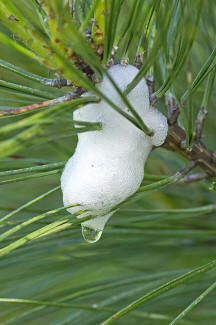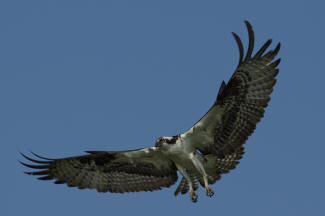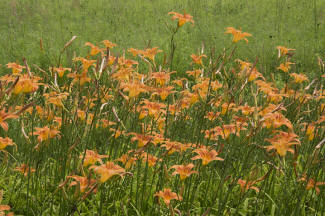PROFILES IN NATURE
Spittlebug
Photo Credit – www.kentuckyupclose.com
This is the time of year that one begins to notice a lot of
different insects and spiders that have overwintered in some fashion.
One of these resembles, well, for lack of a better description, wads of
spit in some tree limbs. This white frothy foam mass is home for the
nymphal form of one of several species of Spittlebugs that we have in
our area.
A common species here and that is shown in the photo is the Pine
or Spruce Spittlebug, Aphrophora
parallella. Different species prefer different host plants and this
particular one as reflected in the name prefers pine and spruce.
Spittlebugs overwinter as eggs inserted into living or dead
twigs. Once the young hatch they make their way to the younger tender
new growth at the tip of twigs, insert mouthparts to feed and begin
exuding the white frothy foam as seen in the photo. The foam mass hides
the nymph from predators, keeps it moist, and apparently tastes bad to
some predators. As the nymph grows it will move around on the tree and
sometimes more than one can be found in a foam mass. When mature the
nymph will emerge from the foam and molt into an adult. The adult
insects have wings and jumping legs and are sometimes referred to as
leafhoppers and froghoppers.
Large populations can damage young trees with feeding holes made
through the bark. The wounds can allow various disease organisms to
enter the tree. Also, moisture formed where the foam mass dissolves and
drips onto other twigs can invite fungal growth.
©
2015 Jack Glisson of WWW.kentuckyupclose.com
Published in The Ballard County Weekly 06/03/2015
PROFILES IN NATURE
Osprey
Photo Credit – www.kentuckyupclose.com
Travel around almost any large body of water in our area this
time of year and one is likely to see an Osprey, or
Pandion haliaetus hunting for
fish. Another common name for this bird is Fish Hawk.
Rarely seen in our land locked counties ospreys are a common
sight near the Mississippi, Ohio, Tennessee, and Cumberland Rivers. This
is because their diets consist of 99% fish. Well adapted for this diet
an osprey will dive from heights up to 100 feet and plunge feet first
into the water to grab their prey. Their feet are built to the task and
with 2 forward and 2 rearward facing talons along with gripping pads
once a fish is caught escape is unlikely. Once caught, they will turn
the fish head first into the wind to make flying easier.
An osprey uses the same nest year after year adding to it each
nesting season. They can become quite large.
Usually in April or May 3 to 4 eggs are laid. The eggs do not
hatch at the same time though so there is usually a dominant chick. If a
food shortage occurs this chick may be the only survivor because it is
able to get most of the food and smaller chicks may starve.
Ospreys became rare during the 1950’s and 1960’s. Wide use of
pesticides such as DDT caused thinning of their egg shells so that most
never hatched. Following the ban on DDT and implementation of hacking
programs and artificial nest sights the osprey has enjoyed a come-back.
Long lived for a bird ospreys can live up to 25 years.
©
2015 Jack Glisson of WWW.kentuckyupclose.com
Published in The Ballard County Weekly 06/010/2015
PROFILES IN NATURE
Daylily
Photo Credit – www.kentuckyupclose.com
Seems every where one goes this time of year the showy orange
colors of Daylilies, Hemerocallis
fulvay, are growing in road
ditches. By the time this column comes out though we may be near the end
of their season.
The daylily is actually not a true lily but that is ok since it
has many positive points in its favor due to this! True lilies are
mostly poisonous but the common daylily is edible in several different
stages. The roots can be boiled or baked (the new white colored ones are
best), young shoots can be eaten either raw in salads or cooked, and
petals can be added to salads. My favorite however is to pick the
un-opened flower buds, dip them in batter, and deep fry them in your oil
of choice. I haven’t tried
them this way but see no reason these buds can’t be sautéed or stir
fried as well.
Not a native plant, the daylily was brought from Asia. Found in
road ditches, old home-places, and yards, it has naturalized itself to
the point that it is here to stay. Many imported plants compete with
native species to the point where they cause problems, however the
common daylily seems to have found a nitch in roadsides and waste areas
where it really doesn’t compete, at least in this area, with crops. As a
matter of fact, they can be used in damp areas for help with erosion
control so may actually benefit some locations.
Daylilies typically do not spread by seed. Instead they grow
rhizomes, (underground stems) and a cutting of that can be used to start
another clump in a place of your choice.
OK, I do not normally like imported, out of hand, exotic species.
The daylily however doesn’t seem to be crowding native species
out and has culinary benefits as well. Learn to identify it and enjoy!
As usual though, neither the paper nor my-self are responsible
for the mis-identification and possible untoward side effects from
eating unknown wild plants.
© 2015 Jack
Glisson of WWW.kentuckyupclose.com
Published in The Ballard County Weekly 06/24/2015


